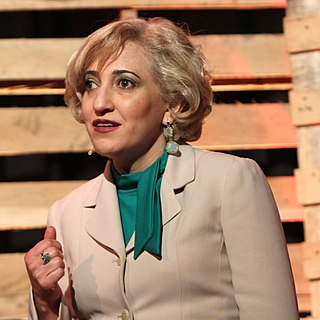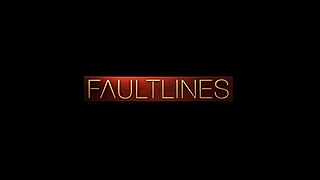
Afghanistan, officially the Islamic Emirate of Afghanistan, is a landlocked country located at the crossroads of Central Asia and South Asia. Referred to as the Heart of Asia, it is bordered by Pakistan to the east and south, Iran to the west, Turkmenistan to the northwest, Uzbekistan to the north, Tajikistan to the northeast, and China to the northeast and east. Occupying 652,864 square kilometers (252,072 sq mi) of land, the country is predominantly mountainous with plains in the north and the southwest, which are separated by the Hindu Kush mountain range. Kabul is the country's largest city and serves as its capital. According to the World Population review, as of 2021, Afghanistan's population is 40.2 million The National Statistics Information Authority of Afghanistan estimated the population to be 32.9 million as of 2020.

The Islamic Movement of Uzbekistan was a militant Islamist group formed in 1998 by Islamic ideologue Tahir Yuldashev and former Soviet paratrooper Juma Namangani; both ethnic Uzbeks from the Fergana Valley. Its original objective was to overthrow President Islam Karimov of Uzbekistan and create an Islamic state under Sharia; however, in subsequent years, it reinvented itself as an ally of Al-Qaeda. The group also maintained relations with Afghan Taliban in 1990s. However, later on, relations between the Afghan Taliban and the IMU started declining.

Paktika is one of the 34 provinces of Afghanistan, located in the eastern part of the country. Forming part of the larger Loya Paktia region, Paktika has a population of about 789,000, mostly ethnic Pashtuns. The town of Sharana serves as the provincial capital, while the most populous city is Urgun.

Fariba Nawa is an Afghan-American freelance journalist who grew up in both Herat and Lashkargah in Afghanistan as well as Fremont, California. She was born in Herat, Afghanistan to a native Afghan family. Her family fled the country during the Soviet invasion in the 1980s. She is trilingual in Persian, Arabic, and English. She has done her master's degree in Middle Eastern Studies and Journalism from New York University. In 2000 she ventured into Taliban controlled Afghanistan by sneaking into the country through Iran. She lived and reported from Afghanistan from 2000 to 2007. Furthermore, She travelled extensively in Afghanistan, Iran, Pakistan, Egypt, and Germany, reporting on her experiences.

Nāwa-I-Barakzāyi District is an administrative district in Helmand Province, Afghanistan located south of the provincial capital of Lashkar Gah along the Helmand River. It is bordered by the districts of Lashkar Gah, Nad Ali, Garmsir, and Rig, as well as the provinces of Nimruz and Kandahar. It falls within the area known as Pashtunistan,, an area comprising most of southeast Afghanistan and northwest Pakistan. The dominant language is Pashto and many of the 89,000 residents practice the traditional code of Pashtunwali. Nawa-I-Barakzayi's name reflects the dominant Pashtun tribe in the district, the Barakzai. Prior to the 1970s, it was called Shamalan after a small village at the south end of the district

The Haqqani network is an Afghan Islamist group, built around the family of the same name, that has used asymmetric warfare in Afghanistan to fight against Soviet forces in the 1980s, and US-led NATO forces and the Islamic Republic of Afghanistan government in the 21st century. It is recognized as a terrorist organization by the United Nations. It is considered to be a "semi-autonomous" offshoot of the Taliban. It has been most active in eastern Afghanistan and across the border in north-west Pakistan.

The 1st Brigade Combat Team, 10th Mountain Division is an active Infantry Brigade Combat Team of the United States Army based at Fort Drum in New York. The brigade headquarters carries the lineage of the 10th Mountain Division's original headquarters company, and served as such in World War II, and in peacetime at Fort Riley, Fort Benning, and West Germany in the 1940s and 1950s.
The Camp Chapman attack was a suicide attack by Humam Khalil Abu-Mulal al-Balawi against the Central Intelligence Agency facility inside Forward Operating Base Chapman on December 30, 2009. One of the main tasks of the CIA personnel stationed at the base was to provide intelligence supporting drone attacks in Pakistan. Seven American CIA officers and contractors, an officer of Jordan's intelligence service, and an Afghan working for the CIA were killed when al-Balawi detonated a bomb sewn into a vest he was wearing. Six other American CIA officers were wounded. The bombing was the most lethal attack against the CIA in more than 25 years.

The 2010 Haiti earthquake was a catastrophic magnitude 7.0 Mw earthquake that struck Haiti at 16:53 local time on Tuesday, 12 January 2010. The epicenter was near the town of Léogâne, Ouest department, approximately 25 kilometres (16 mi) west of Port-au-Prince, Haiti's capital.

The humanitarian response by national governments to the 2010 Haiti earthquake included numerous national governments from around the world pledging to send humanitarian aid to the Haitian people. The United Nations Office for the Coordination of Humanitarian Affairs (OCHA) and ReliefWeb are coordinating and tracking this aid.

Google Person Finder is an open source web application that provides a registry and message board for survivors, family, and loved ones affected by a natural disaster to post and search for information about each other's status and whereabouts. It was created by volunteer Google engineers in response to the 2010 Haiti earthquake.

Damage to infrastructure in the 2010 Haiti earthquake was extensive and affected areas included Port-au-Prince, Petit-Goâve, Léogâne, Jacmel and other settlements in southwestern Haiti. In February Prime Minister Jean-Max Bellerive estimated that 250,000 residences and 30,000 commercial buildings had collapsed or were severely damaged. The deputy mayor of Léogâne, which was at the epicenter of the earthquake, reported that 90% percent of the buildings in that city had been destroyed and Léogâne had "to be totally rebuilt." Many notable landmark buildings were significantly damaged or destroyed, including the Presidential Palace, the National Assembly building, the Port-au-Prince Cathedral, and the main jail. The Ministry of Education estimated that half the nation's 15,000 primary schools and 1,500 secondary schools were severely damaged, cracked or destroyed. In addition, the three main universities in Port-au-Prince were also severely damaged. Other affected infrastructure included telephone networks, radio station, factories, and museums. Poor infrastructure before the earthquake only made the aftermath worse. It would take half a day to make a trip of a few miles. The roads would also crisscross haphazardly due to disorganized construction.
A tectonic weapon is a hypothetical device or system which could trigger earthquakes, volcanic eruptions, or other seismic events in specified locations by interfering with the Earth's natural geological processes. It was defined in 1992 by Aleksey Vsevolodovich Nikolayev, corresponding member of the Russian Academy of Sciences: "A tectonic or seismic weapon would be the use of the accumulated tectonic energy of the Earth's deeper layers to induce a destructive earthquake". He added "to set oneself the objective of inducing an earthquake is extremely doubtful." Though no such device is known to have been built, tectonic weapons have occasionally appeared as plot devices in works of fiction.

Fault Lines is an American current affairs and documentary television program broadcast on Al Jazeera English. Premiering in November 2009, the program is known for investigative storytelling across the United States and the Americas, examining the United States and its role in the world.
Television in Afghanistan started broadcasting in August 1978, flourishing until the 1990s, when hostilities in the capital Kabul destroyed broadcasting infrastructure. Between 1996 and 2001, the Taliban government outlawed television, though some stations in areas outside Taliban control continued to broadcast. After their removal, country-wide television broadcasting was resumed beginning with the government-run channel Afghanistan National Television. It was reported that Afghanistan currently has over 200 local and international television channels, 96 in Kabul and 107 in other provinces of the country. In 2014, the country commenced a switch from analog to digital TV transmission.
Information Operations is a category of direct and indirect support operations for the United States Military. By definition in Joint Publication 3-13, "IO are described as the integrated employment of electronic warfare (EW), computer network operations (CNO), psychological operations (PSYOP), military deception (MILDEC), and operations security (OPSEC), in concert with specified supporting and related capabilities, to influence, disrupt, corrupt or usurp adversarial human and automated decision making while protecting our own." Information Operations (IO) are actions taken to affect adversary information and information systems while defending one's own information and information systems. In the United States Navy, information operations are often supervised by a Navy Information Operations Command (NIOC), for example in the United States Tenth Fleet which has several NIOCs.
Anarkali Kaur Honaryar is a Sikh Afghan politician. She is also a women's rights activist and a dentist, as well as a medical doctor.
All Partners Access Network (APAN), formerly called Asia-Pacific Area Network, is a United States Department of Defense (USDOD) social networking website used for information sharing and collaboration. APAN is the premier collaboration enterprise for the USDOD. The APAN network of communities fosters multinational interaction and multilateral cooperation by allowing users to post multimedia and other content in blogs, wikis, forums, document libraries and media galleries. APAN is used for humanitarian assistance and disaster relief, exercise planning, conferences and work groups. APAN provides non-governmental organizations (NGOs) and U.S. partner nations who do not have access to traditional, closed USDOD networks with an unclassified tool to communicate.

David P. Gilkey was a U.S. photojournalist for National Public Radio in the United States, for whom he covered disasters, epidemics and war.

Dr. Hideki "Kit" Miyamoto is a Japanese American structural engineer known for being the founder-CEO of Miyamoto International, a global structural engineering and disaster risk reduction organization. He is also the chairman of California's Alfred E. Alquist Seismic Safety Commission, which investigates earthquakes and recommends policies for risk reduction.















